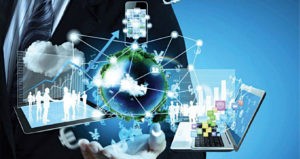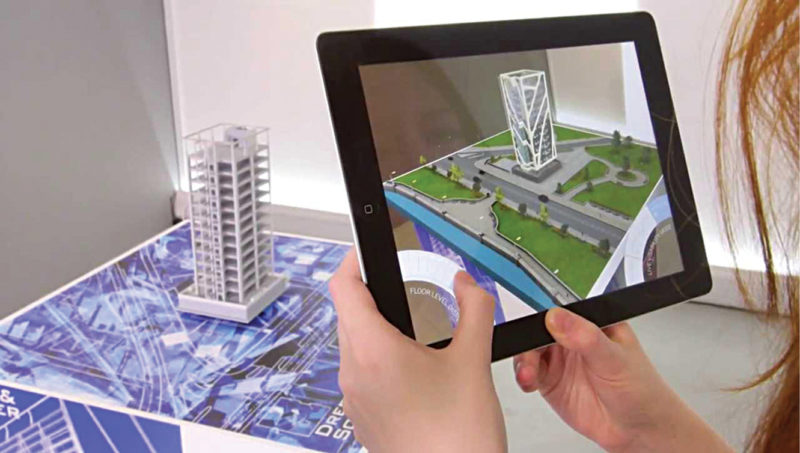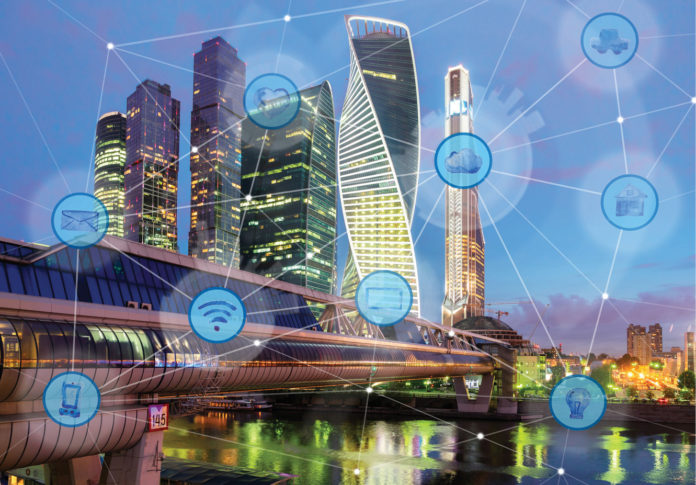Technology runs our lives these days. This article provides a quick look at the scope of the present technologies a few years down the line.
 As we enter 2019, we see technology keeping pace in every field. It is now within our reach to support smart living and styling. Technology is transforming the way we learn, work, play and live. Technological advancements in communication make it possible for us to communicate irrespective of location and ability. Technology has its branches and necessary aids for each one of us, for our every need, irrespective of industry or market. Industries need to take advantage of recent technologies to reach global markets and to make services available to a broad range of users.
As we enter 2019, we see technology keeping pace in every field. It is now within our reach to support smart living and styling. Technology is transforming the way we learn, work, play and live. Technological advancements in communication make it possible for us to communicate irrespective of location and ability. Technology has its branches and necessary aids for each one of us, for our every need, irrespective of industry or market. Industries need to take advantage of recent technologies to reach global markets and to make services available to a broad range of users.
Technology is driving innovation and empowering organisations in their digital transformation journey. It is helping companies transform their operations and business models. External partnerships can open new markets for platforms and products, and also help companies overcome traditional barriers of expansion and scale with the help of core competencies that each partner possesses. Following are a few current technologies poised to become world changers in the year 2019 and beyond.
Blockchain technology
As more and more people are getting connected, identity and privacy protection have become a concern. Blockchain is an incredibly strong distributed data ledger, information within which is encrypted to keep it safe. It is stored across a huge network and, hence, there is no central point of failure.
Blockchain and biometrics provide a robust way to secure and manage user identities through an incorruptible and encrypted method of record keeping that is easily verifiable. So it is likely to play an important role in establishing secure data records.
Companies have applied Blockchain technology to everything from tracking and accessing information in academia, to games that use complex algorithms to create unique experiences. After finding its successful application in almost every field—finance, agriculture and geospatial areas, among others—it is now revolutionising the energy sector. Its full potential can be used to keep our votes secure, in addition to keeping our transactions and data secure. By 2020, the world will see mass adoption of Blockchain due to its advanced cryptography and ciphering techniques.
Artificial intelligence and machine learning
These technologies are part of the intelligence behind machines, and are rapidly transforming the digital era. These have wide applications in emerging technologies like augmented reality (AR)/virtual reality (VR), cloud computing, robotics, face recognition, chatbots and so on. Artificial intelligence (AI) has found applications in most areas today, be it e-commerce, healthcare, customer service or automotives.
Machine learning (ML) tracks users’ experiences and history through simple programming methods. Advancement of ML has increased the opportunities for specialisation in several new subsets, such as neural networks, natural language processing (NLP) and deep learning. Deep learning is a branch of ML where multi-layered neural network algorithms attempt to model high-level abstractions in data.
Information technology (IT) and cybersecurity firms have begun to adopt artificial neural networks to monitor and prevent distributed denial of services (DDoS) attacks. AI-powered platforms are set to help traffic management, too. By 2020, these two innovations will be deeply entrenched in both business and consumer activities.
Cloud computing
Cloud computing provides a gateway to AI tools to gear up the global technology market. Cloud computing’s Pay As You Go model helps reduce the cost of investment in software and hardware. As part of digital transformation, more and more companies are expected to move their IT systems to the cloud by 2019. Everything as a service (XaaS) solutions, including software as a service (SaaS), infrastructure as a service (IaaS), function as a service (FaaS) and platform as a service (PaaS) will make the journey of technology faster to enhance customer experience.

The flexible consumption model of cloud computing will provide companies with the leverage of taking expertise from the world’s biggest technology companies and startups. It will give them access to companies of all sizes and newer technologies, by including flexible consumption in their innovation strategies.
The new computing continuum is multi-cloud models with their diverse, decentralised and autonomic management, and hybrid cloud models that cross boundaries between internal and external cloud services, or between public, private and community providers.
In 2020, edge computing will be one of the the top technology trends enabling intelligent networks where connected devices will perform necessary analytics right at the location to perform specific actions. This will all happen within a few milliseconds with the help of hardware accelerators and highly-specialised computing devices.
The Internet of Things
The Internet of Things (IoT) is a system where devices are connected wirelessly with the help of unique identifiers. It enables transfer of data without human intervention. One of the best applications of the IoT is the safety measures to protect students. ID cards in some schools contain a chip to track the location of a child. It reduces the chances of kidnapping or a child going missing.
Farmers can now solve problems with the help of cameras, sensors and weather stations. Apps are being developed to help farmers check the health of their crops and know how much to irrigate and which crop is suitable for which land. This facilitates maximum yields.
IoT solutions are also influencing the hospitality industry.
The progress of the ambitious smart cities project is significant. The IoT has made it easier to collect data to analyse and make better decisions based on quality and operational efficiency. Smart streetlights and fuel-monitoring systems are great examples of latest IoT applications.
In a smart home, sensors send collected data to smart home apps, check energy usage and manage it automatically. These detect issues, and inform concerned parties and even call for assistance, thus helping maintain home appliances easily.
Smart meters measure energy and water consumption, and send data over the connected app. Smart waste management helps keep cities clean. Users looking for parking are directed to the nearest available spot. Sensors or smart cards allow them to pay for parking automatically. Prepaid electricity for rural areas has paved the way for rural development.
Low power wide area network (LPWAN) wireless communication technology connects objects that require low-power, long-range and low data rate to the IoT. Many objects connected to the IoT only need to transfer small amounts of data, such as commands and status updates. This is where LPWAN becomes useful.
Be it a simple smartwatch or an ECG recorder, the medical industry has benefitted majorly from technology. The IoT has made it easy to monitor health. It helps transmit signals directly to hospitals, making it easy to track in real time and provide necessary medication immediately. Thanks to the IoT, portable and handheld health monitoring devices, and moving healthcare units will be soon available across all parts of India.
Autonomous vehicles
From parking sensors to driverless cars, the IoT has helped evolve the automobile industry. Vehicles now come with an inbuilt GPS system that helps drivers navigate a new place or drive in a different country. Devices are now installed in vehicles that can track driver behaviour and, in case of an accident, notify the family.
GPS lets vehicles be tracked via both computer and smartphones. This lets people know where their vehicles are at all times.
Developments in the field of electric cars are happening fast, to find the best solutions for EV batteries, their charging stations, battery recycling and so on. We may expect electric cars running on the road by 2020.
Toll taxes can now be paid by smart sensing systems or smart cards. This removes the need for standing in long queues. Such electronic toll collection systems are based on RFID or GPS.
Flying cars, hyperloops, high-speed trains and much more are under development.
Mobile technology
It is believed that by 2020, every individual will own 10 gadgets. This itself has added to the economy.

Payments and transactions can be made with the swipe of a finger. This makes it easier to track goods and take necessary action, if required.
Benefits of 5G such as high Internet speed, lower latency and higher capacities will soon be common. This will make 5G a prime technology trend in 2020 and beyond.
Technologies for fast-charging batteries and wireless charging for smartphones would become a regular and affordable feature soon. Wireless charging offers opportunities for automotive, healthcare and other industries.
Foldable, flexible and rollable displays for wearables devices, tablets and laptops are also in development stages. QLED, OLED and IGZO are the latest technologies that will soon find applications in all TVs, mobile screens, tablets and other gadgets.
Robots, cobots and drones
These have been widely adopted in the military, medical and manufacturing industries. Cobots have eliminated the risks of working with robots. Many personalised robots have also been developed to assist humans in most areas. These are assisting human beings for making decisions based on facts.
Robots will soon be seen empowering law and order at banks and police stations. Countries are working towards developing a number of machines that can benefit police departments.
Latest technology in robotics is integrating robots with AI so that they can interact with humans in a better way.
Robotic fish SoFi is helping explore the underwater world.
From healthcare, e-commerce and retail to agriculture and defence, drone technology is being utilised for surveillance and services (delivery). Drones are being widely used for military applications, too. But soon, their commercial use will be seen in areas like photography, recording, construction site monitoring and the like.
Drones provide precise and accurate information about the work in progress. These also save a lot of time, as entire sites can be surveyed in just a few minutes.
As drone technology is rapidly developing accuracy and precision in its readings, even less human involvement will be required. Governments across the world are also working towards keeping registration of drones and robots official.
Nanoscience and nanotechnology
Nanotechnology is the application of nanoscience that deals with the use of nanomaterials and nano-sized components in useful products. It provides the ability to design custom-made materials and products with new and enhanced properties. It has a wide range of application in nanoelectronic components, medicines and sensors, and interfaces between electronic and biological systems, automotive, nanoelectronics devices and more.
Scientists and engineers are deliberately making nanomaterials to take advantage of their enhanced properties such as lighter weight, higher strength, increased control of light spectrum and greater chemical reactivity. Dealing at nanoscale enables them to utilise the unique physical, mechanical, chemical and optical properties of such materials.
Printable solar materials are one of the examples that could turn parts of a house into solar panels. Quantum dots are set to revolutionise the field of displays, improving resolution and colour contrast. Nanosensors for agricultural pest management are already on their way to the market.
Virtual assistants
Personal digital assistants like Amazon Alexa are already present in the market, and many more will be released this year.
An automated grocery store is a good example of virtual assistants being deployed on a large scale. This is eliminating the need for cashiers. Watasale, India’s first cashier-less store in Kochi, Kerala, is a major tech triumph of 2018.
Virtual assistants allow users to control anything through voice commands, and perform services or tasks on their behalf. These exploit AI, NLP, ML, voice processing, and reasoning and knowledge representation to make human-machine interactions simpler, more natural and appealing.
Chatbots are shaping the business growth story. By 2020, it would reach its full market potential, with majority of businesses employing chatbots to redefine their customer engagement policies with the integration of NLP.
AR and VR
AR and VR will revolutionise the construction industry and change the way buildings are made. This will help with planning and plotting sites before even breaking ground.
AR tools help healthcare workers save lives. AR and VR will be used extensively in training and guiding doctors and the military.
VR has revolutionised the gaming industry, too.
AR is playing a vital role in Industry 4.0. It helps select manufacturing parts and send industrial fault status information to applications installed on users’ phones and assemblies. Many companies are developing applications to provide real-time information about product processing to workers. They are also making smart applications that help with decision-making and improved work procedures.
To sum up
The technology today has world-changing potential in the near future. By 2020, the human face will become the ideal technology partner, from unlocking a phone, house or car, to withdrawing money from a bank ATM.
Apart from giving data related to how users would react, technology will also guide businesses on how they should act when users behave in a certain way. Hence, companies will be investing more in educating and training workforces for the coming digital era.
Several technological revolutions will come and go. What is important is to stay updated with all the latest developments and to understand how these will affect the world.









